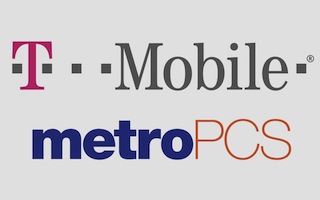NewCo needs to drop some of the PCS from MetroPCS
by Andrew J. Shepherd
Sprint 4G Rollout Updates
Friday, October 5, 2012 - 8:00 AM MDT
Unless you have been under a telecom rock the past 48 hours -- or stuck in the boonies with only a GSM device (I kid, I kid) -- you have read that T-Mobile USA and MetroPCS have agreed in principle to a complicated reverse merger arrangement that would create a combined carrier, at least provisionally called NewCo. Now, Sprint has jumped back into the fray, this after Sprint's executive leadership had readied a bid for MetroPCS earlier this year but was vetoed by the board of directors. Sprint's motivations for pursuing a counter bid could be multifold.
- Sprint could actually be trying to acquire MetroPCS, feeling a sense of urgency that it did not this spring. Plus, Sprint's perception on Wall Street has improved dramatically during the past few months, making a merger a more financially palatable prospect.
- Sprint could be attempting to force T-Mobile to sweeten its offer for MetroPCS, potentially costing competitor T-Mobile additional financial resources.
- Sprint could be trying to gain some concessions in order to allow the merger to proceed.
That last possibility is what this article will explore, namely, that NewCo would agglomerate an egregious amount of PCS 1900 MHz spectrum in several markets in which Sprint also happens to be a bit PCS spectrum shy. By throwing its own hat into the ring, Sprint should pressure NewCo to divest excess PCS spectrum to Sprint voluntarily. Alternatively, Sprint could lobby the FCC, oppose the merger and its transfer of spectrum licenses, and try to get some mandated divestitures that way.
To illustrate, MetroPCS currently operates in at least some PCS spectrum in 10 major markets. The linked spreadsheet below compares NewCo's potential PCS A-F block spectrum holdings to Sprint's current PCS A-F block spectrum holdings in those 10 markets.
https://docs.google.com/spreadsheet/ccc?key=0ArY31Mr219-ydE1tRVdJS19ocjBZXzVibk01Wm5wLWc&usp=sharing
In those 10 markets, Sprint holds 20-30 MHz of PCS A-F block spectrum, while NewCo would have 35-60 MHz of PCS A-F block spectrum, including 50-60 MHz in four of the markets. Considering that 60 MHz represents fully half of the total 120 MHz bandwidth of the traditional PCS band, that is an outrageous amount of PCS spectrum -- especially for a carrier that is hitching its LTE wagon to AWS, not PCS. Even AT&T would blush at acquiring that much spectrum within a given band. Keep in mind, too, that this analysis does not take into account the 40-60 MHz of AWS 2100+1700 MHz spectrum that NewCo would hold in those same 10 markets, including 50-60 MHz in all but Atlanta. And that 50-60 MHz would be even more than half of the total 90 MHz bandwidth of the AWS band.
Furthermore, T-Mobile has made it known that it intends to pare down its exclusively PCS GSM/GPRS/EDGE spectrum utilization to 10 MHz per market, refarming its remaining PCS spectrum to W-CDMA/HSPA+ in a desperate attempt to attract unsubsidized iPhone users. The Dallas Region Case Study graphic from the NewCo investor presentation corroborates this plan. Moreover, the graphic shows how NewCo plans to operate DC-HSPA+ (20 MHz) for at least the next three years in parallel on both PCS and AWS plus 15-20 MHz FDD LTE on AWS -- an unnecessarily redundant, inefficient strategy.

In short, NewCo does not need as much PCS spectrum as it is set to acquire. Otherwise, it is just as much a spectrum glutton as are VZW and AT&T. So, here is the solution. In Atlanta, Jacksonville, Miami, Sacramento, and San Francisco, NewCo should preemptively choose to or be required to divest 10 MHz of its accumulated PCS spectrum. Sprint would be the obvious buyer, as that would increase its PCS A-F block assets to 30 MHz in those markets. Meanwhile, NewCo would still retain 35-50 MHz of PCS in those same markets, plenty of spectrum for 10 MHz of GSM, 10 MHz of HSPA+ or even 20 MHz of DC-HSPA+, and 10 MHz of CDMA1X/EV-DO for MetroPCS legacy.
Sources: FCC, MetroPCS
-
 12
12









25 Comments
Recommended Comments